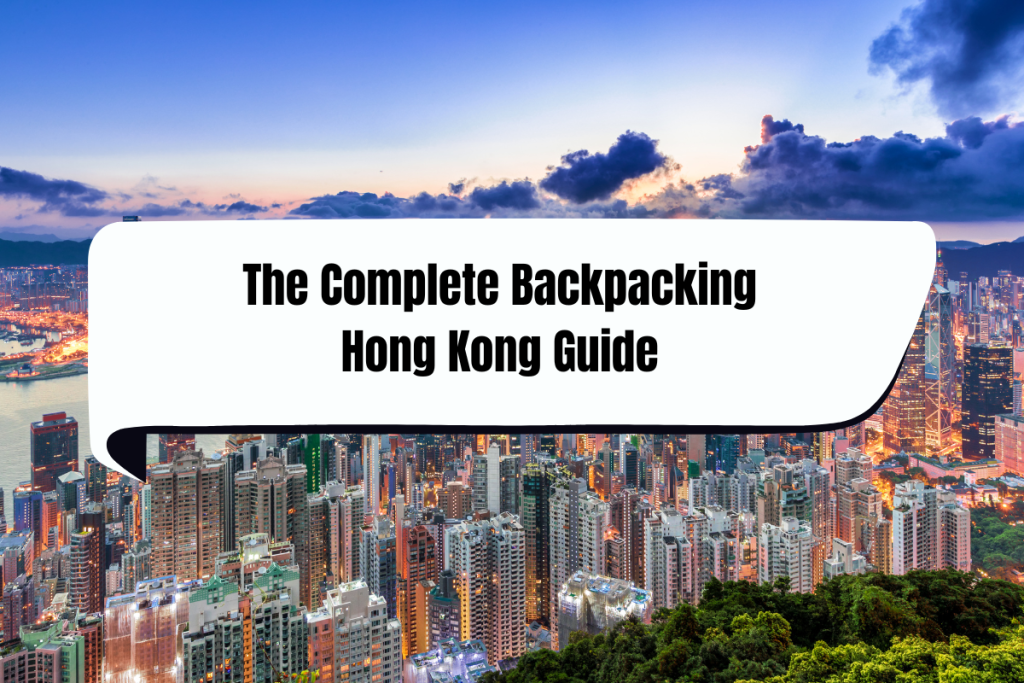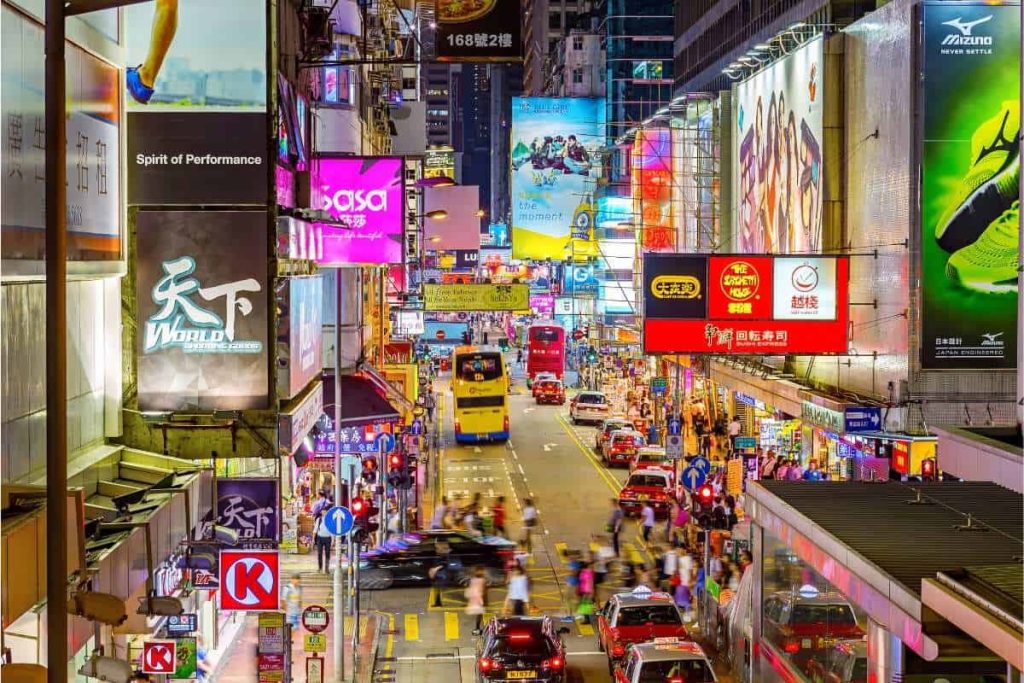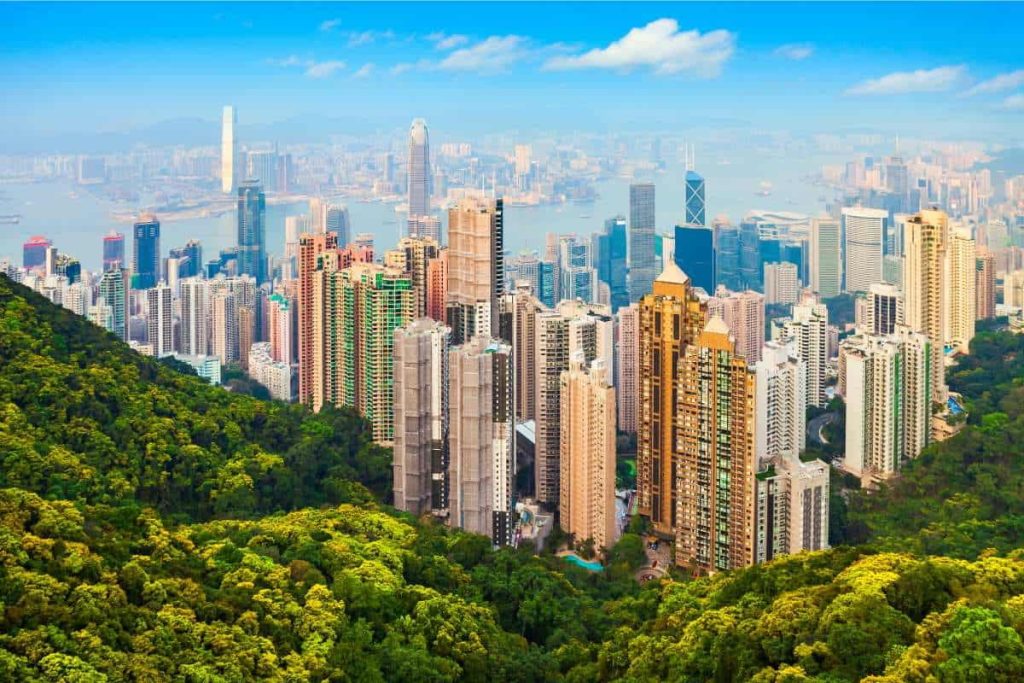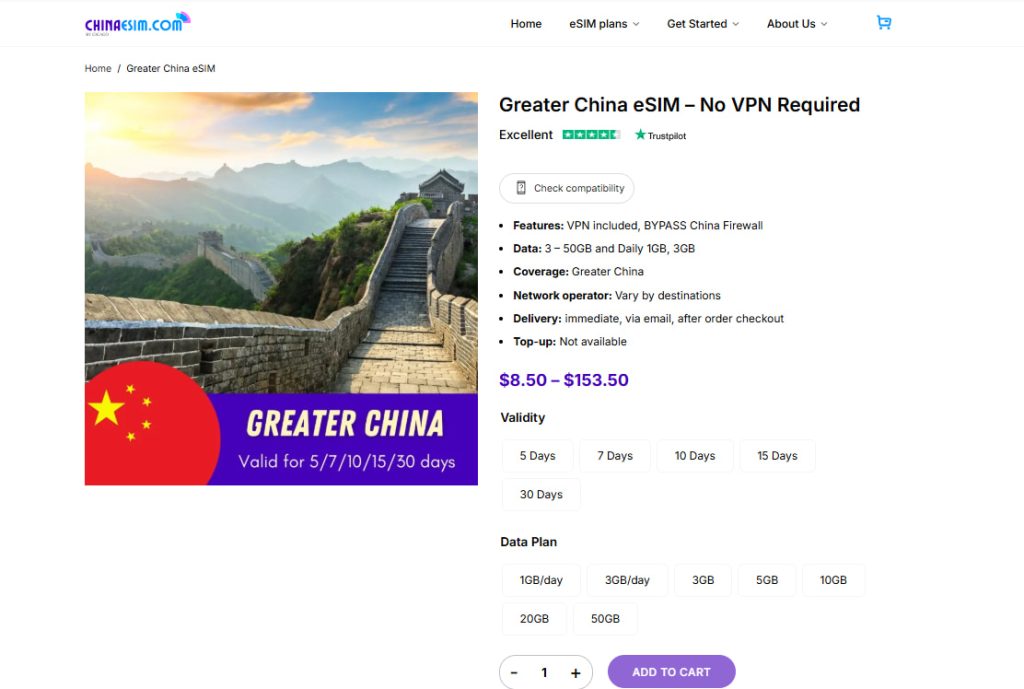Want to visit Hong Kong but worried about timing, costs, or getting lost? This complete backpacking Hong Kong covers the essentials and you will get to know the best visiting time, best destinations, best accommodations, ways to stay connected and more insightful information for your trip.

I. Why go backpacking in Hong Kong
Hong Kong is a great destination to explore for many reasons. While accommodation costs can be relatively high, food and public transportation are quite affordable, making it accessible for travelers on various budgets.
It hits that sweet spot between Asian culture and Western comfort. You’ll find familiar chains like McDonald’s right next to traditional dim sum places, modern shopping malls beside ancient temples, and English signs everywhere alongside Chinese ones.
Best of all, Hong Kong is a perfect starting point for exploring Asia as you can find cheap flights connecting you to Thailand, Vietnam, and other Southeast Asian countries.

II. Best time to visit Hong Kong
The best time to visit Hong Kong falls between October and December because of the mild temperatures, between 19°C-28°C, along with low humidity.
If you don’t mind the rising humidity, you should also consider visiting Hong Kong in Spring (April to June) as this is a lovely time to enjoy the blooming flowers and traditional festivals such as the Cheung Chau Bun Festival (May) and Dragon Boat Festival (June). The temperatures during this period range from 20°C to 28°C.
It is advisable to avoid Hong Kong during summer from July to September because it is typhoon season. The temperature ranges from 26°C to 33°C (79°F to 91°F), while humidity often exceeds 80% – leading to heavy rain with strong winds that frequently cause disruptions in transport services.
III. Best places to visit in Hong Kong
Victoria Peak
From Victoria Peak, you get the most breathtaking views of Hong Kong, where the skyline, Victoria Harbour, and surrounding islands are all visible in a single, sweeping scene. The Peak has excellent hiking trails through lush gardens, and a modern shopping center with restaurants overlooking the skyline.
Best times to visit: Just before sunset (around 5:30-6:30 PM) or early morning to avoid crowds.

Tsim Sha Tsui Promenade
Along Tsim Sha Tsui Promenade, you can stroll by the water while enjoying Hong Kong’s skyline, take pictures, and watch street performers – all for free. The spot is famous for the Symphony of Lights show at 8 PM, where buildings light up to music.
Best time to visit is 7:45 PM for finding a good spot for the light show and watching the city transition from day to night.
Star Ferry
Cruise across Hong Kong harbor on the iconic Star Ferry, a classic attraction operating since 1888. You can enjoy 10 minutes of stunning harbor views from both sides for only 3 HKD (approximately $0.40 USD), giving you the most affordable way to experience Hong Kong’s waterfront up close.
Ngong Ping 360 & Tian Tan Buddha
The adventure begins with a 25-minute cable car ride over mountains and sea. For breathtaking views, choose the crystal cabin with a glass bottom. This ride takes you to Lantau Island, home to the impressive Tian Tan Buddha, one of the largest seated Buddhas in the world, sitting atop 268 steps.
Inside the base, there are historic relics. Next to it, Po Lin Monastery offers traditional vegetarian meals and beautiful architecture.
Go early, before 10 AM for clear views and to avoid the crowds.
IV. Best accommodations for backpackers in Hong Kong
For backpackers looking to explore Hong Kong on a budget, there are numerous hostels that provide affordable yet comfortable accommodations.
YHA Mei Ho House
Location: Sham Shui Po, Kowloon
Price:
- Dorms from 256 HKD (~$33 USD)
- Private rooms from 840 HKD (~$107 USD)
Pros: Large common areas, en-suite bathrooms, kitchen with pantry, close to Sham Shui Po Night Market.
Cons: Private rooms are more expensive.
Yesin @ Yau Ma Tei
Location: Yau Ma Tei, Kowloon
Price:
- Dorms from 193 HKD (~$25 USD)
- Private rooms from 426 HKD (~$54 USD)
Pros: Central location, social events, kitchen facilities.
Cons: Basic amenities, no-frills accommodation.
Check Inn HK
Location: Wan Chai, Hong Kong Island
Price:
- Dorms from 200 HKD (~$26 USD)
- Private rooms from 540 HKD (~$69 USD)
Pros: Great location, organized events, projector room.
Cons: Small dorms, no privacy curtains.
Davao Hostel Hong Kong
Location: Tsim Sha Tsui, Kowloon
Price:
- Dorms from 150 HKD (~$19 USD)
Pros: Central location, near attractions, air conditioning, Wi-Fi.
Cons: Basic amenities.
V. Hong Kong Backpacking costs
Budgeting is very important when going backpacking in Hong Kong. Here’s a concise guide to help you manage your expenses during your Hong Kong trip.
| Category | Cost (HKD) | Cost (USD) | Notes |
| Accommodation (Hostels) | 160-320 HKD (Dorms), 400-800 HKD (Private) | $20-$40 (Dorms), $50-$100 (Private) | Dorms in Hong Kong are cheaper, however, private rooms might be more expensive |
| Food (Street Food) | 40-80 HKD per meal | $5-$10 per meal | Affordable local dishes like dim sum, noodles, and egg tarts. |
| Food (Budget Restaurant) | 80-120 HKD per meal | $10-$15 per meal | Inexpensive sit-down meals in local cafes or casual restaurants. |
| Food (Mid-range Restaurant) | 120-200 HKD per meal | $15-$25 per meal | Higher-end dining with a wider menu selection, but still affordable. |
| Transportation (MTR) | 5-25 HKD per ride | $0.60-$3 per ride | Efficient subway system; prices vary by distance. |
| Transportation (Octopus Card) | 50 HKD (Card cost, recharges extra) | $6 (Card cost, recharges extra) | Prepaid travel card, ideal for frequent public transport use. |
| Attractions | 39-236 HKD | $5-$30 USD | Visit Victoria Peak – Free to visit; tram ride costs around $6-$10 USD.Explore Street Markets – Free to wander around (Temple Street Night Market, Ladies’ Market).Star Ferry Ride – $0.30-$0.50 USD per ride.Hiking – Free (Dragon’s Back, Victoria Peak trails).Visit Museums – Entry fees range from $5-$10 USD (some have free admission days).Big Buddha – Free entry, $20-$30 USD for the Ngong Ping 360 cable car. |
| Daily Backpacking Budget | 310-540 HKD per day | $40-$70 per day | Covers food, transport, and accommodation for budget travelers. |
With careful planning and this budget guide, you can explore the best of Hong Kong while staying within your financial limits.
VI. How to stay connected in Hong Kong
Roaming
Roaming in Hong Kong is a convenient option to stay connected and use your home network while traveling abroad.
Pros: Convenience, no need to swap SIMs.
Cons: Typically more expensive than local options.
Price: Data roaming rates can range from $5-15 USD per MB without a plan. However, many providers offer international data packages that reduce the cost to around $10-50 USD
Pocket Wifi
Pocket Wi-Fi simply means carrying a portable router that provides internet access to more devices. It is very good for those whose need for an Internet connection involves several people or several gadgets
Pros: High-speed internet for multiple devices, great for group travelers.
Cons: Requires rental and return, and prices can add up for longer stays.
Price: Approximately $5-10 USD per day
Recommended providers: Klook, KKday
SIM Cards
Pros: Easy to purchase at the airport, convenience stores, or telecom shops. Good 4G/5G coverage.
Cons:
- Only works if your phone is unlocked.
- You lose your home phone number temporarily.
SIM cards are a great way to stay connected in Hong Kong, providing local data and call services at affordable rates. They are easy to purchase at the airport, convenience stores, or online.
Price: Plans range from $10-30 USD depending on the data and validity period.
Recommended brands: CSL, China Mobile, SmarTone.
eSIM
Pros:
- No need for a physical SIM card.
- Works immediately after purchase and activation online.
- Can keep your original SIM active for calls/texts (if your phone supports dual-SIM).
Cons: Requires an eSIM-compatible phone.
eSIMs allow you to activate a mobile plan without using a physical SIM card. This is ideal for those with eSIM-compatible phones and eliminates the need to swap out your home SIM.
Price: Typically $10-20 USD for a limited data plan (5-10 GB).
Recommended providers: chinaesim.com, Airalo, Holafly.

VII. Getting Around Hong Kong
MTR (Mass Transit Railway)
The MTR is Hong Kong’s efficient subway system that connects most parts of the territory including Hong Kong Island, Kowloon, and the New Territories.
Tips: Purchase an Octopus Card for seamless travel. During rush hours (8-9 AM, 5-7 PM), trains can be crowded, so plan accordingly.
Airport Transportation
From Hong Kong International Airport, you have several options:
- Airport Express: The fastest option (24 minutes to Central), costs 115 HKD.
- Public Buses: More economical (20-50 HKD) but take longer (45-70 minutes).
- Taxis: Most expensive option (300-400 HKD) but convenient for groups.
VIII. Currency and Payments
The local currency is the Hong Kong Dollar (HKD). Credit cards are widely accepted in malls, restaurants, and hotels, but smaller vendors and markets often prefer cash. The Octopus Card can also be used for small purchases at convenience stores, supermarkets, and fast-food chains.
IX. FAQs About Backpacking in Hong Kong
Is Hong Kong expensive?
Hong Kong has a mixed cost profile. Accommodation is relatively expensive, but food and transportation are affordable. A budget traveler can manage on 400-600 HKD per day.
Do I need a visa?
Many Western countries (including USA, UK, EU countries, Australia, and Canada) receive 90-day visa-free entry. Other countries like South Africa get 30 days, while some Asian countries get 14 days. Always check the Hong Kong Immigration Department website for the most up-to-date information for your specific nationality.
Is tap water safe?
Tap water in Hong Kong is technically safe to drink as it meets WHO standards, but most locals prefer to boil it first. Bottled water is widely available and affordable.
Is Hong Kong safe at night?
Hong Kong is one of the safest major cities in the world with low crime rates. Public areas are well-lit and public transportation runs late. As with any city, maintain basic precautions, but Hong Kong is generally safe at any hour.
X. Conclusion
That was all about the guide for backpackers in Hong Kong. Remember: October to December offers the best weather, Kowloon area gives you great value for accommodation, and eSIM is your best bet for staying connected